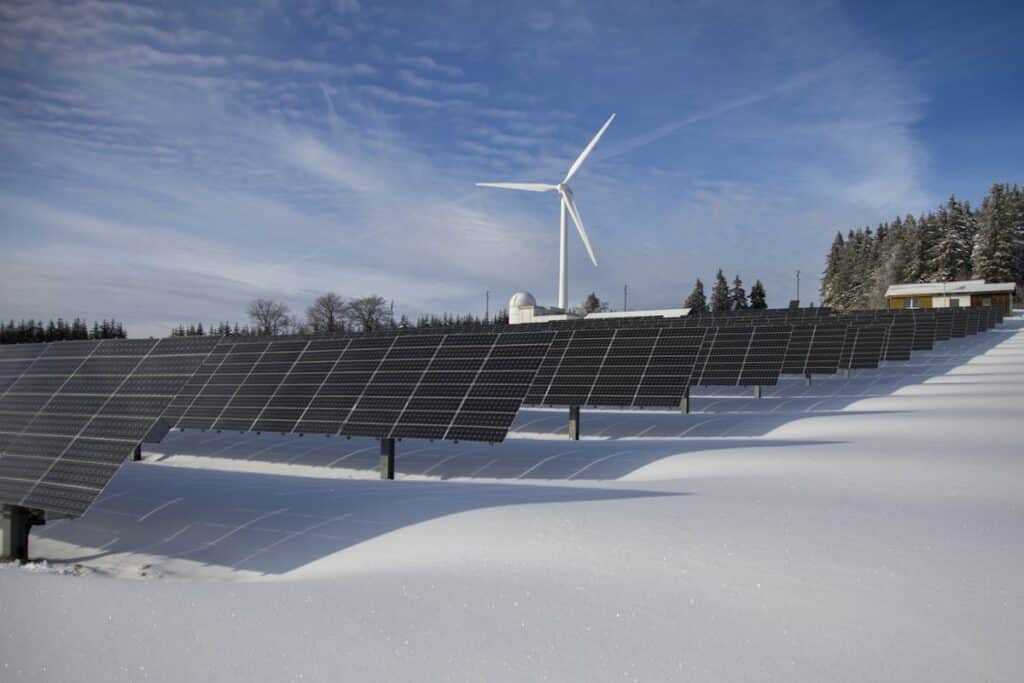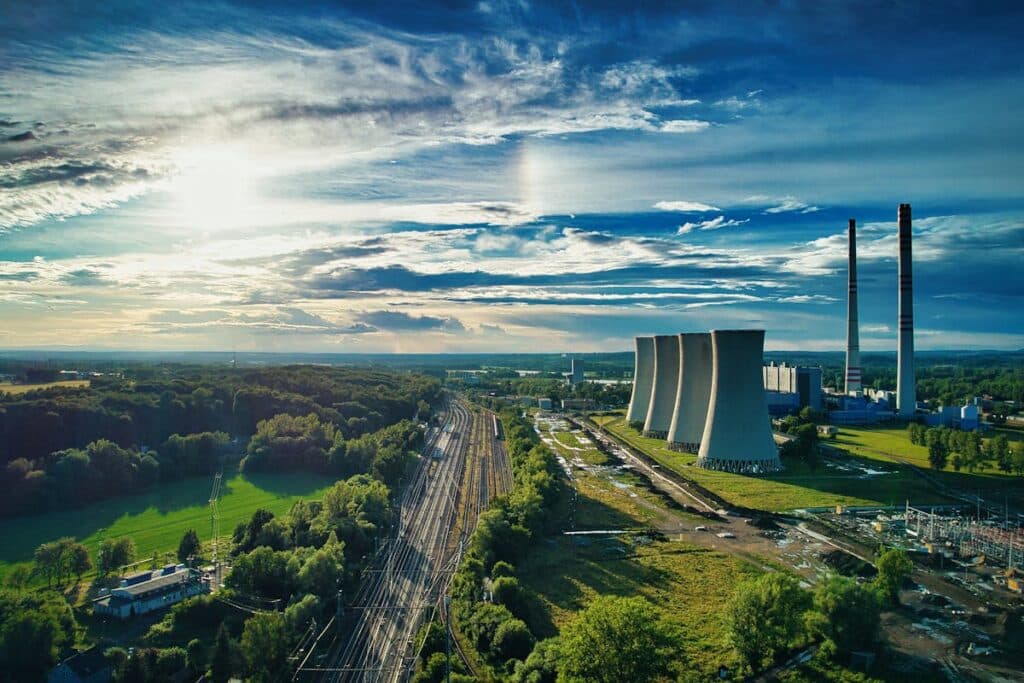In a world increasingly aware of the environmental challenges posed by traditional energy sources, the pursuit of clean, renewable energy has never been more critical. The need to reduce carbon emissions, combat climate change, and protect our planet for future generations has driven innovation in the energy sector.
Today, we stand on the brink of a green revolution, where clean energy sources are not only viable but essential. This guide will explore the cleanest energy sources available and offer practical insights on how microstartups can harness these technologies to power their operations, reduce their environmental impact, and build a sustainable future.
1. Solar Energy
Solar energy is derived from the sun’s radiation and can be converted into electricity or heat. This is achieved primarily through two technologies: Photovoltaic (PV) cells, which directly convert sunlight into electricity, and Concentrated Solar Power (CSP) systems, which use mirrors to focus sunlight and generate thermal energy.
Mechanism:
- Photovoltaic Cells: These cells are made of semiconductor materials, usually silicon, that release electrons when exposed to sunlight, generating an electric current.
- Concentrated Solar Power: CSP systems use mirrors or lenses to concentrate a large area of sunlight onto a small area. The concentrated energy heats a fluid, producing steam that drives a turbine connected to a generator.
Benefits:
- Abundant and Renewable: Solar energy is inexhaustible and available worldwide.
- Scalability: Solar panels can be installed on various scales, from small residential rooftops to large solar farms.
- Low Operating Costs: Once installed, solar systems require minimal maintenance and have no fuel costs.
Challenges:
- Intermittency: Solar power is dependent on sunlight, making it less reliable in cloudy or night-time conditions without storage solutions.
- Space Requirements: Large-scale solar installations require significant land area, which can be a limiting factor in densely populated regions.
2. Wind Energy
Wind energy harnesses the power of wind to generate electricity through wind turbines. This technology has advanced significantly, with modern wind turbines capable of producing large amounts of electricity.
Mechanism:
- Wind Turbines: As wind flows over the blades of a turbine, it causes them to spin. This motion turns a rotor connected to a generator, which then produces electricity.
Benefits:
- Low Carbon Footprint: Wind energy production generates negligible greenhouse gas emissions.
- Efficiency: Wind turbines can convert a significant portion of wind energy into electricity.
- Rapid Deployment: Wind farms can be built relatively quickly compared to other power plants.
Challenges:
- Variability: Wind speeds are not constant, leading to fluctuations in power output.
- Impact on Wildlife: Wind turbines can pose risks to birds and bats, though mitigation measures are improving.
- Aesthetic and Noise Concerns: Some communities oppose wind farms due to their visual impact and the noise generated by turbines.

3. Hydropower
Hydropower, or hydroelectric power, is generated by using the flow of water to turn turbines that generate electricity. It is one of the oldest and most widely used forms of renewable energy.
Mechanism:
- Dams and Reservoirs: Large-scale hydropower typically involves damming a river to create a reservoir. Water released from the reservoir flows through turbines, generating electricity.
- Run-of-River Systems: These systems generate power without large reservoirs, relying on the natural flow of the river.
Benefits:
- Reliable and Consistent: Hydropower provides a steady and controllable source of energy.
- High Efficiency: Hydropower plants can convert over 90% of available energy into electricity.
- Flood Control and Water Supply: Dams can also provide flood control, irrigation, and water supply benefits.
Challenges:
- Environmental Impact: Dams can disrupt ecosystems, fish migration, and local communities.
- High Initial Costs: Building dams and reservoirs requires significant investment and long construction periods.
- Dependence on Water Availability: Droughts and changing precipitation patterns due to climate change can impact hydropower generation.
4. Geothermal Energy
Geothermal energy is generated by harnessing the heat from beneath the Earth’s surface. This heat can be used directly for heating or converted into electricity.
Mechanism:
- Geothermal Power Plants: These plants extract steam or hot water from underground reservoirs to drive turbines that generate electricity.
- Geothermal Heat Pumps: These systems use the stable temperature of the ground to provide heating and cooling for buildings.
Benefits:
- Constant Availability: Geothermal energy is available 24/7, regardless of weather conditions.
- Low Emissions: Geothermal plants emit very low levels of greenhouse gases compared to fossil fuel plants.
- Small Footprint: Geothermal facilities require less land than other renewable energy sources.
Challenges:
- Location-Specific: Geothermal resources are geographically limited to areas with significant tectonic activity.
- High Upfront Costs: Drilling and exploration costs can be high, making initial investment a barrier.
- Potential for Induced Seismicity: In some cases, geothermal drilling can trigger small earthquakes.
5. Biomass Energy
Biomass energy is produced from organic materials such as plant and animal waste. It can be used to generate electricity, heat, or biofuels.
Mechanism:
- Combustion: Biomass can be burned directly to produce heat or steam, which drives turbines to generate electricity.
- Anaerobic Digestion: Organic waste is broken down by bacteria in the absence of oxygen, producing biogas that can be used for energy.
Benefits:
- Carbon Neutral: When managed sustainably, the carbon dioxide released during biomass combustion is offset by the carbon absorbed during the growth of the biomass.
- Versatile: Biomass can be used for electricity, heating, and as a feedstock for biofuels.
- Waste Reduction: Using waste materials for energy helps reduce landfill use and greenhouse gas emissions from decomposing waste.
Challenges:
- Land Use: Large-scale biomass production can compete with food production and lead to deforestation if not managed properly.
- Emission Concerns: While biomass is cleaner than fossil fuels, it can still produce pollutants like particulates and nitrogen oxides.
- Sustainability: The sustainability of biomass energy depends on responsible sourcing and land management practices.
6. Nuclear Energy (as a Clean Alternative)
Overview: Nuclear energy, though not renewable, is often considered a clean energy source because it produces a large amount of electricity with very low greenhouse gas emissions during operation.
Mechanism:
- Nuclear Fission: Nuclear power plants generate electricity through the fission of uranium atoms, which releases a significant amount of heat used to produce steam that drives turbines.
Benefits:
- High Energy Density: Nuclear power is extremely efficient, with a small amount of fuel producing large amounts of electricity.
- Low Emissions: Nuclear plants emit no greenhouse gases during operation.
- Stable Power Supply: Nuclear energy provides a continuous and reliable source of electricity.
Challenges:
- Nuclear Waste: The disposal of radioactive waste is a major challenge, requiring secure, long-term storage solutions.
- Safety Concerns: Accidents, though rare, can have catastrophic consequences, as seen in Chernobyl and Fukushima.
- High Costs and Long Development Times: Building and decommissioning nuclear plants require significant time and financial investment.
How Can Microstartups Use Cleanest Energy Sources?
Microstartups, with their agility and innovative approaches, are ideally positioned to embrace clean energy solutions from the outset. Doing so can lead to reduced operational costs, a smaller environmental footprint, and alignment with the growing consumer demand for green practices.
Solar Energy for Microstartups
To begin with solar energy, microstartups should evaluate the solar potential of their location. This can be done using solar mapping tools or by consulting with local solar providers. Key factors to consider include roof orientation, shading, and the local climate. Once the potential is established, startups can choose the appropriate solar system. Rooftop solar panels are ideal for those with access to a sunny roof, significantly lowering electricity bills. For those with limited rooftop space, community solar projects offer an alternative, allowing businesses to purchase or lease a share of a nearby solar farm.
Financing is a crucial aspect of solar adoption. Startups should investigate local, state, and federal incentives such as tax credits, rebates, and grants to reduce initial costs. Additionally, options like solar leases, power purchase agreements (PPAs), or green loans can ease the financial burden. Once the system is selected, certified installers should handle the setup to ensure proper installation and grid connection if needed. Regular maintenance, though minimal, is essential to keep the system operating efficiently.
Solar energy offers significant cost savings by reducing electricity bills and provides a level of energy independence, reducing reliance on the grid. Moreover, adopting solar can enhance a startup’s brand image, appealing to environmentally conscious customers and investors. However, the initial investment can be substantial, so it’s essential to explore financing options. To maximize benefits, particularly in off-grid scenarios, startups should consider energy storage solutions like batteries to store excess energy for use during periods without sunlight.
Wind Energy for Microstartups
Wind energy is another viable option, especially for microstartups located in areas with consistent wind speeds. The first step is to assess the wind resources of the location, using online tools or consulting with wind energy experts. If the location has sufficient and consistent wind speeds, small wind turbines can be a good investment. These turbines can generate power directly for the business or supplement grid energy. Combining wind energy with solar power can create a more reliable and consistent energy supply.
Navigating zoning laws and obtaining permits is necessary before installing wind turbines. Engaging with the local community is also important to address potential concerns about noise and aesthetics. Once all approvals are in place, an experienced installer should handle the turbine’s setup to ensure optimal placement and performance. Regular monitoring and maintenance are essential to keep the turbine operating efficiently.
Wind energy provides a renewable and sustainable power source, significantly reducing carbon footprints. Although wind energy is highly site-specific, it offers long-term savings once the turbines are installed. Wind energy can be particularly beneficial in remote areas where grid reliability is a concern. However, the location is a critical factor, and urban startups may find it challenging to harness wind effectively. Addressing visual and noise concerns is also necessary to ensure community acceptance.

Hydropower for Microstartups
Hydropower can be a highly reliable energy source for microstartups located near rivers, streams, or other flowing water bodies. The first step is to identify these water resources and assess their flow rate and elevation change to determine the feasibility of hydropower. For startups with access to suitable water sources, micro-hydropower systems are ideal. These systems generate electricity by diverting a portion of the water through a turbine, providing a continuous power supply.
Before installation, it’s important to ensure compliance with local environmental and water rights regulations. Obtaining necessary permits may be required, depending on the location. Professional installation is recommended to optimize the system’s efficiency while minimizing environmental impact. Regular maintenance is crucial to ensure continuous operation, especially during periods of varying water flow. Integrating the hydropower system with existing energy infrastructure can further optimize its use.
Hydropower provides a continuous and reliable energy source, particularly in areas with stable water flow, and offers low operating costs once installed. It is a sustainable energy source with a small environmental footprint when managed properly. However, hydropower systems can impact local ecosystems and water flow, so careful planning and environmental assessments are necessary. Additionally, not all startups have access to suitable water resources, limiting hydropower’s applicability.
Geothermal Energy for Microstartups
Geothermal energy is another clean energy source, particularly effective in regions with volcanic activity or hot springs. Startups should begin by assessing the geothermal potential of their location. Depending on the availability of resources, they can choose between geothermal heat pumps (GHPs) for heating and cooling or direct geothermal energy use for significant heating needs, such as in greenhouses or aquaculture.
Installing geothermal systems requires integration with existing HVAC (Heating, Ventilation, and Air Conditioning) infrastructure to maximize efficiency. Regular maintenance is necessary to keep the system running efficiently, including checking fluid levels and ensuring heat exchangers are functioning correctly. Combining geothermal energy with other renewable sources and energy storage solutions can further enhance energy resilience.
Geothermal energy provides a stable, constant source of heating and cooling, reducing dependency on fluctuating external temperatures. After the initial installation, geothermal systems offer very low operational costs due to their high efficiency and minimal maintenance needs. The environmental impact is minimal, with low emissions and a small land footprint. However, the initial investment for geothermal systems can be high, though they offer substantial long-term savings. Geothermal energy’s applicability is also geographically limited, making it more suitable for certain regions.
Biomass Energy for Microstartups
Biomass energy is a versatile option for microstartups, especially those with access to organic waste or agricultural residues. The first step is to identify available biomass resources, ensuring they can be sustainably sourced without competing with food production or causing deforestation. Biomass boilers and furnaces are ideal for startups needing heating solutions, while anaerobic digesters can convert organic waste into biogas for heating or electricity generation.
Installation should be handled by professionals to ensure the system is designed and installed correctly, with compliance to local emissions regulations. Emissions control technologies may be necessary to minimize pollutants and meet environmental standards. A sustainable biomass sourcing strategy is essential to maintain a consistent fuel supply without harming the environment. Regular maintenance of biomass systems is also critical to ensure efficient and safe operation.
Biomass energy is versatile, with applications in electricity, heating, and fuel production, making it a flexible option for microstartups. It also contributes to waste reduction, supporting a circular economy. When sourced and used sustainably, biomass energy can be carbon neutral, offsetting the carbon dioxide released during combustion by the carbon absorbed during biomass growth. However, emissions from biomass combustion can still be a concern, so implementing emission controls is necessary. Additionally, startups must ensure a reliable and sustainable biomass supply chain to avoid disruptions in energy production.
Conclusion
The transition to clean energy is not just a trend but a necessity for a sustainable future. For microstartups, adopting clean energy sources is an opportunity to reduce operational costs, enhance resilience, and contribute to environmental stewardship. By harnessing the power of the sun, wind, water, earth, and biomass, microstartups can build a green foundation that supports growth while minimizing their ecological footprint. In doing so, they not only contribute to a healthier planet but also position themselves as leaders in the new green economy.
